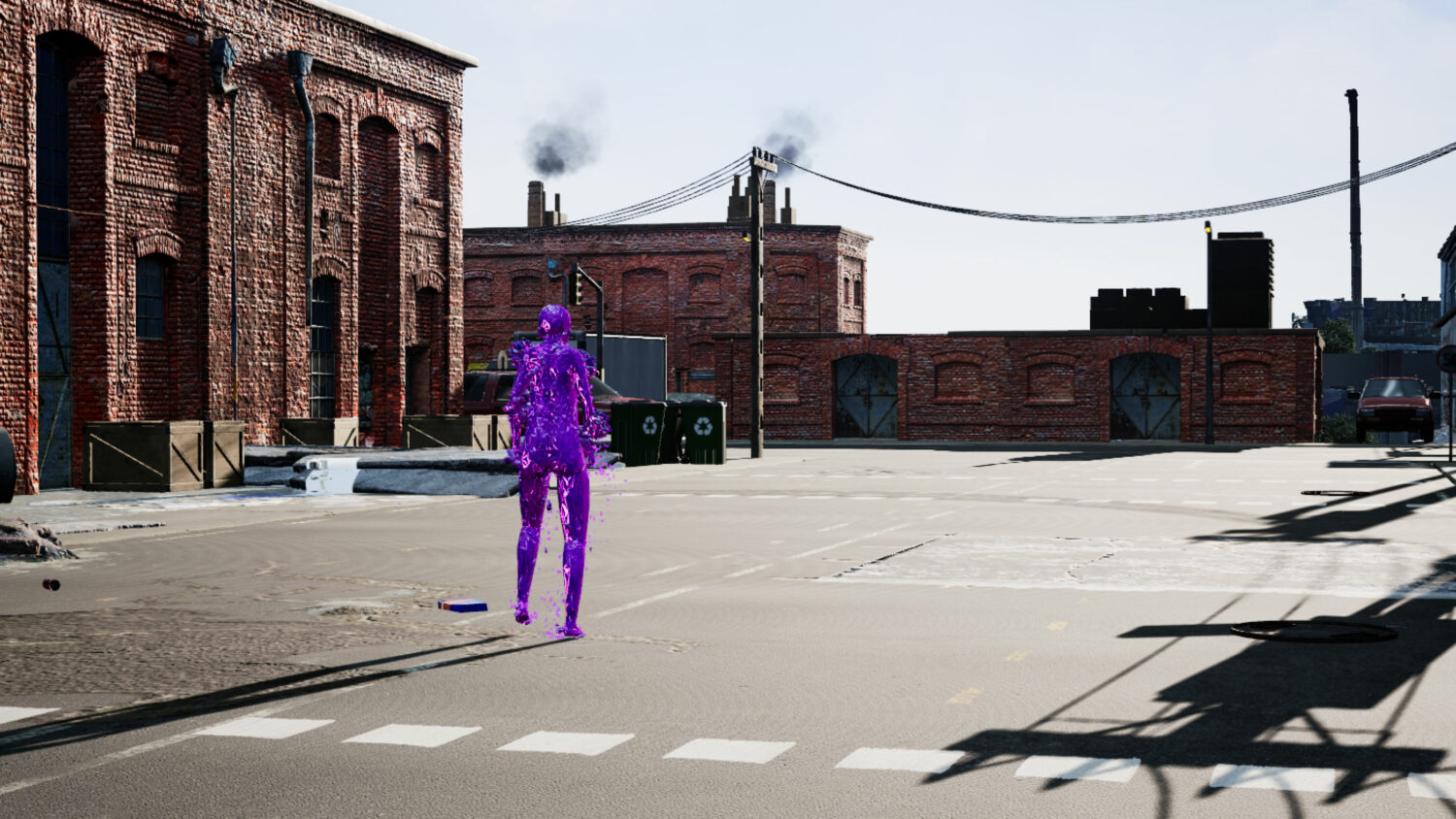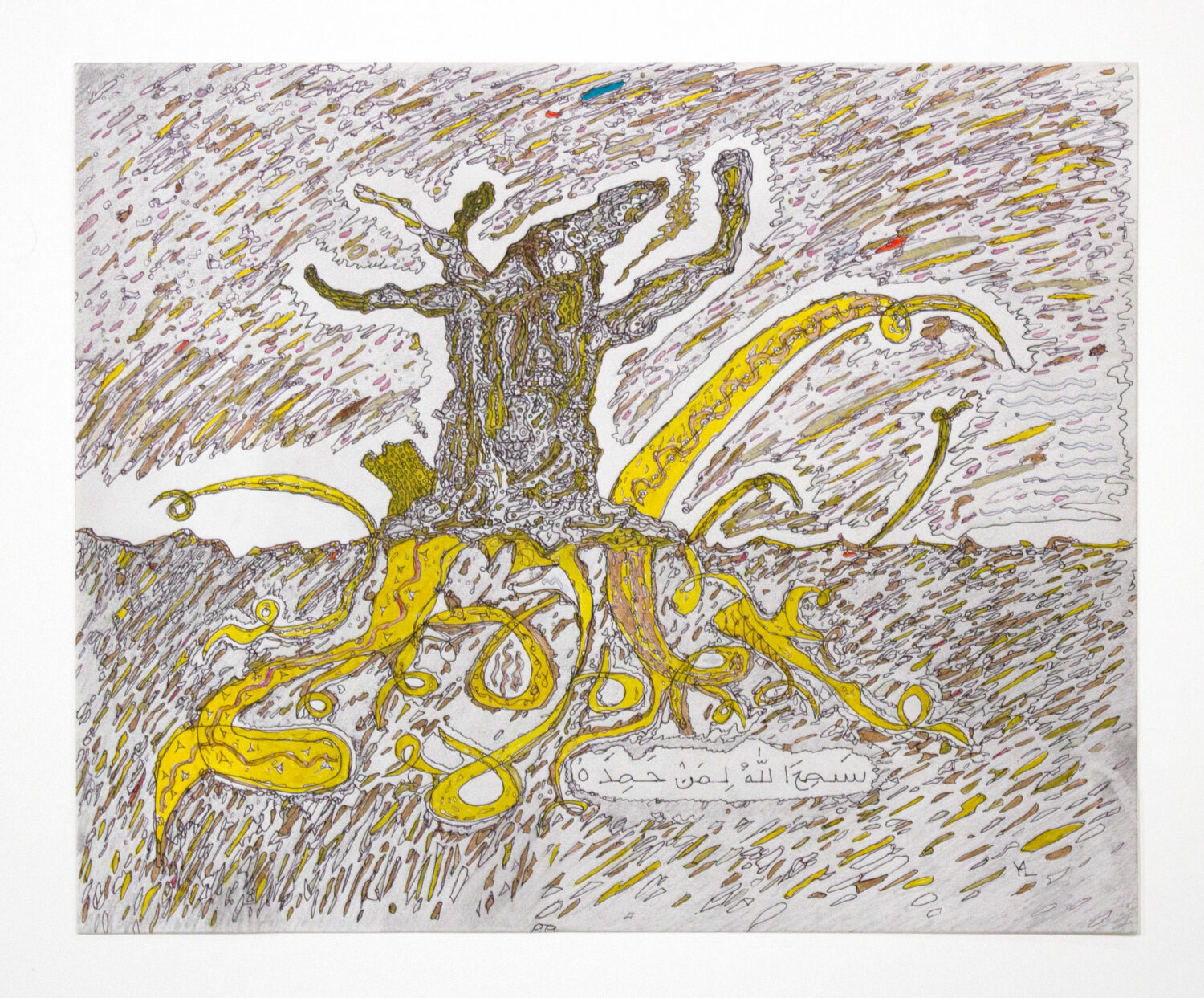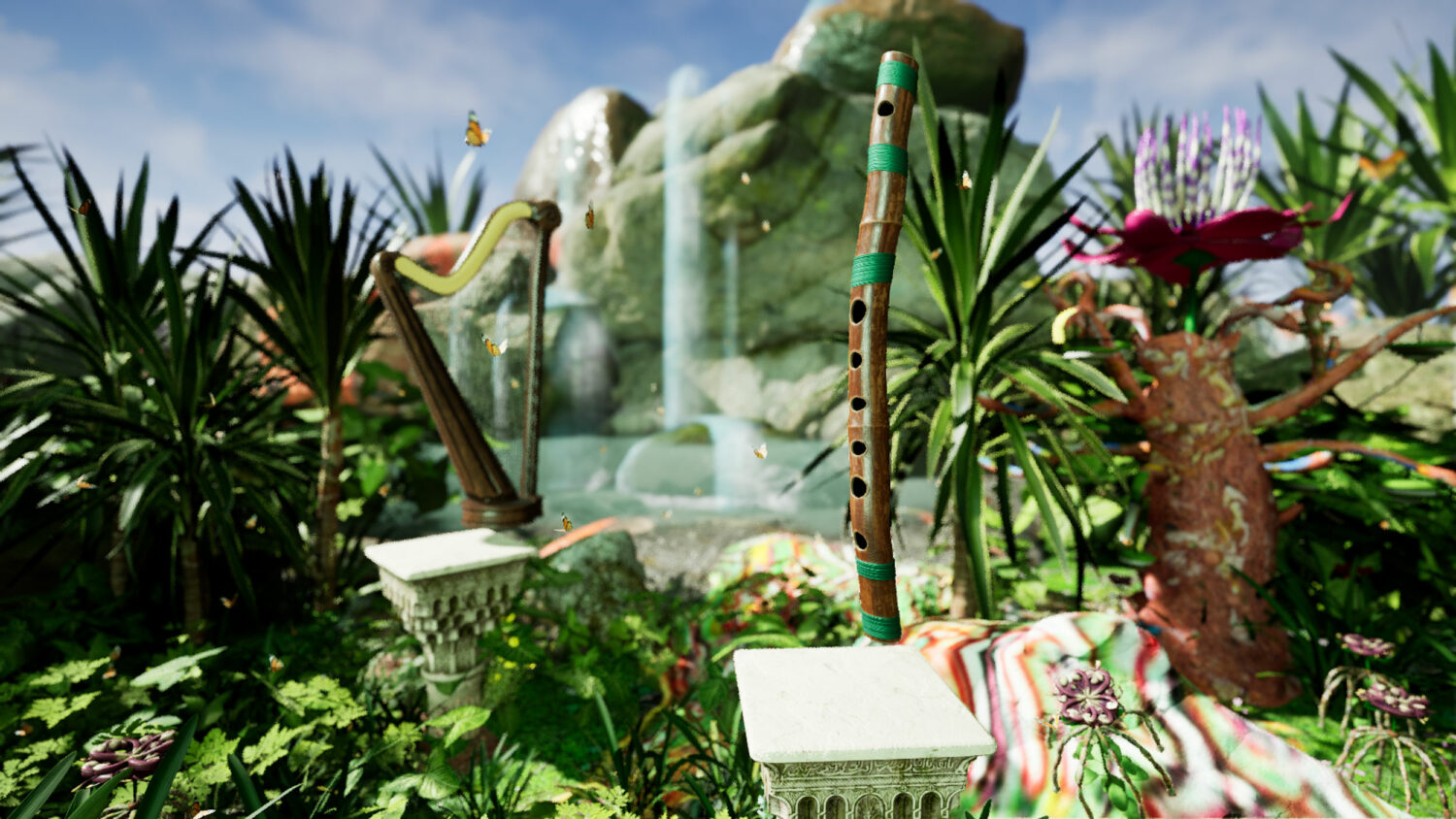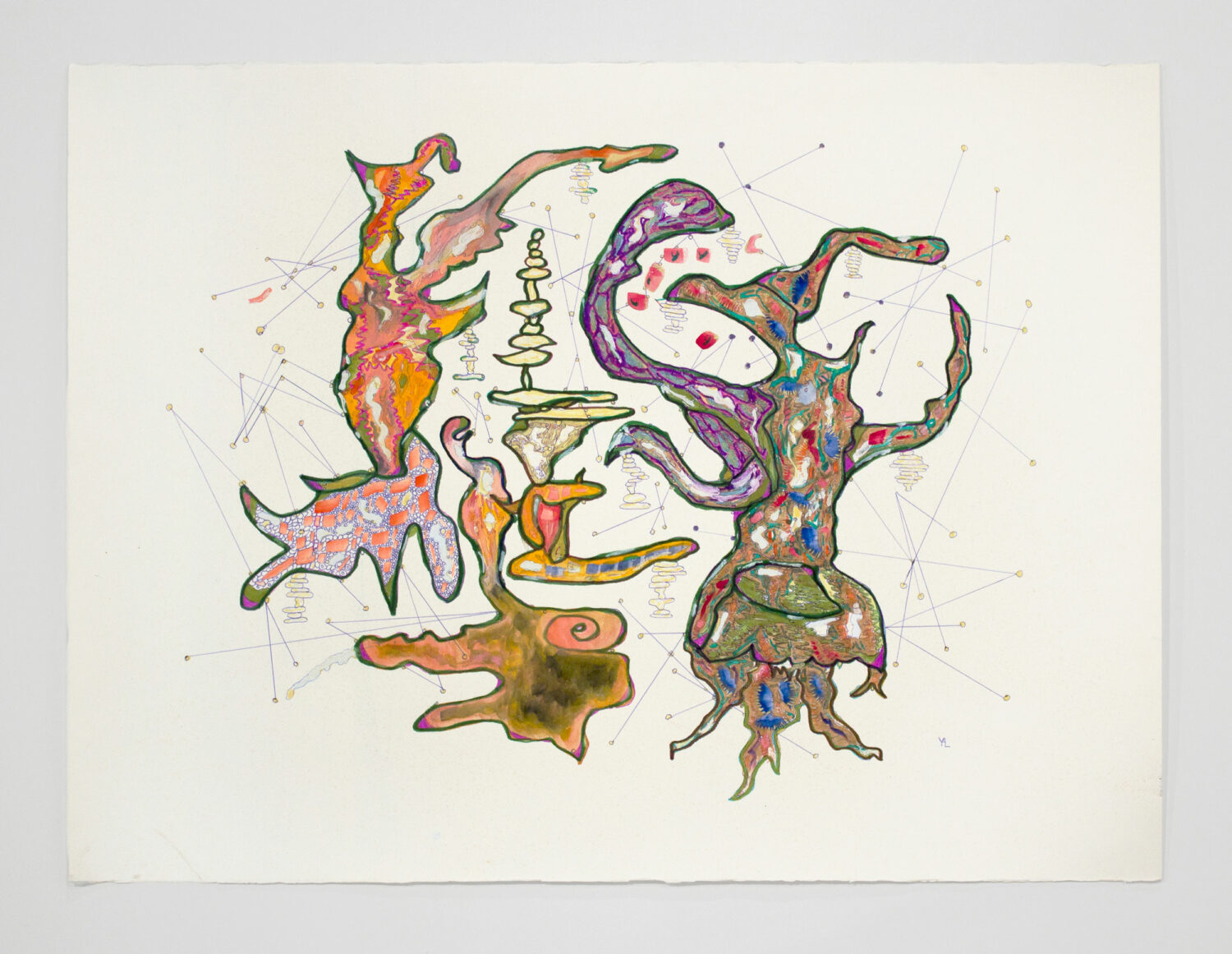Interview: Shezad Dawood On The Garden As A Cross-Cultural Symbol
By Something CuratedShezad Dawood’s multidisciplinary practice weaves together stories, hybrid realities, and symbolism to build nuanced works that extend across a diverse array of media, from painting and sculpture to film and VR. Fascinated by ecologies and architecture, his work takes a philosophical approach, asking questions and exploring alternative futures through what Dawood describes as ‘world-building’ and ‘imagineering’. The artist is well-known for his exploration of non-Western traditions that inform and intersect with established canons, whether in the field of architecture or, more recently, music. Running at WIELS, Brussels from 18 May – 13 August 2023, Night in the Garden of Love, Inspired by & featuring Yusef Lateef is an exhibition developed by Dawood and inspired by the creative output of jazz innovator and master musician Yusef Lateef. Titled after Lateef’s 1988 novella, the exhibition fosters an intriguing dialogue between the two artists’ works. To learn more, Something Curated spoke with Dawood.

Something Curated: Can you tell us about your upcoming presentation at WIELS, Brussels; what is the thinking behind the exhibition?
Shezad Dawood: The thinking was really based around how to enact or transliterate the musical idea of ‘call-and-response’ into an exhibition dynamic. Having always been medium agnostic, I was really interested to expand how an exhibition could function as a larger score or mise-en-scène. So, I have created an intuitive journey that allows viewers to be fellow travellers through textiles, VR, sound, choreography and digital generation. And of course, gardens are at the heart of this, where they become social or communal spaces, as in civic parks given to the public, but also thinking of them as spaces of both intimacy and of spiritual transformation – particularly how they function in Islamic cultures and Sufi allegory.
SC: Since 2013, you have been experimenting with VR. What continues to excite you about the conceptual possibilities of the medium?
SD: I was initially quite sceptical, I had been disappointed in the 90s with the promise of VR in that moment, but a coder friend had been encouraging me to step into the space based on my self-professed engagement with the concept of ‘immersion’, particularly in artists’ film up to that point – something I enacted through a use of multichannel sound and non-linear storytelling. Through continuing to experiment with the evolving capacity of VR, I remain excited by the possibilities we have been developing in the studio, two of which will feature in the exhibition at WIELS.

The first is shifting to a 2-player experience, which not only doubles the number of players at a time but, especially with this notion of the garden, allows for a shared journey with a friend, partner or complete stranger. The other thing I’ve been very interested in, is how to document choreography in VR. Some years ago a choreographer friend complained about translating the experience of live dance on film, and the question stuck with me. The VR element of the show attempts to address this, with a choreographer/dancer (Wan-Lun Yu) performing as a mutant dancer. She will also be performing the choreography we developed live in the space at set times during the run of the show, creating a parallax between the live and virtual experiencing of her character.
SC: What first drew you to the work of Yusef Lateef? And how have you approached positioning your work in dialogue with his?
SD: I was doing a show in Brooklyn in 2015, and caught up with my old friend Alhena Katsof, who had recently curated a show of Lateef’s drawing at White Columns. I had known the music since childhood, but the drawings were a revelation. She alerted me to the fact that there was a lot more material in the archive, including his writing practice, notably his eco-sci-fi novella Night in the Garden of Love (from 1988) that just blew me away. She connected me to the estate in 2016 and I guess I’ve been doing a deep dive into Lateef and his multifarious legacy and genius ever since. Gardens seemed to be a shared metaphor for both of us and extended across his writing, drawings, and his thinking around musical scores and intervals, and this inspired me to no end.

I started to draw and paint plant forms in response to his drawings, but all the while considering them musically, which I do while I paint anyway – for me there’s a thin border between colour and sound. And this call-and-response kept evolving as the forms from my paintings spilled over into the idea of creating neo-abstract digital seedbanks, and then how the mutant from his novella could lead people through my VR interpretation of his novella. I even ended up creating a perfume for the exhibition to scent it after some of the key plant forms that Lateef refers to in the novella and his wider writing, as well as sympathetic plant forms that have always interested me for their specific properties, such as the night-blooming Queen of the Night.
SC: In a wider context, what does collaboration mean for you in your practice?
SD: I love collaborating, it’s challenging and creates complexity, but it adds a richness and depth from having multiple voices other than my own present and singing through the work. I’ve always felt somewhat suffocated by the post-enlightenment tradition of disciplinary silos or ghettoes. I love stepping into other disciplines, like in film or orchestra, or even gaming, it allows you to world-build on a whole different scale.

SC: Could you expand on your exploration of the garden as an ancient and cross-cultural symbol?
SD: If we think about the geometric considerations of the Islamic Garden as a physical metaphor (excuse the contradiction) for a vision of Paradise, you can’t escape the idea of humanity before the fall embodied in the Garden of Eden, but also how that connects to current ecological narratives around re-wilding and broader co-existence. I think there’s something in this trans-temporal idea of what the Garden can represent that is a very powerful syntax to recover at this point of climate breakdown and zoonotic viral transfer.
SC: What are you currently reading?
SD: I just finished Olga Ravn’s The Employees, which was brilliant, particularly in its philosophical probing into longevity between human and synthetic intelligences. And I’m nearly at the end of Helene Cixous’ So Close, which is a stream-of-consciousness exploration of her own fragmented relationship with Algeria, encompassing her relationship with her mother, her friend Jacques Derrida and her former schoolmate, Zohra Drif. I can never read just one book at a time! So, I’m also reading MR Carey’s Infinity Gate, and I’ve just started David Graeber’s Pirate Enlightenment, all about piratical proto-democracies in historical Madagascar – I’ve been interested in piracy as a political form since I first read Pirate Utopias by Peter Lamborn Wilson many years ago.
Feature image: Shezad Dawood, Night in the Garden of Love, Inspired by & featuring Yusef Lateef, 2023. Produced by UBIK Productions, co-commissioned by WIELS, Brussels and Aga Khan Museum, Toronto. Courtesy of UBIK Productions